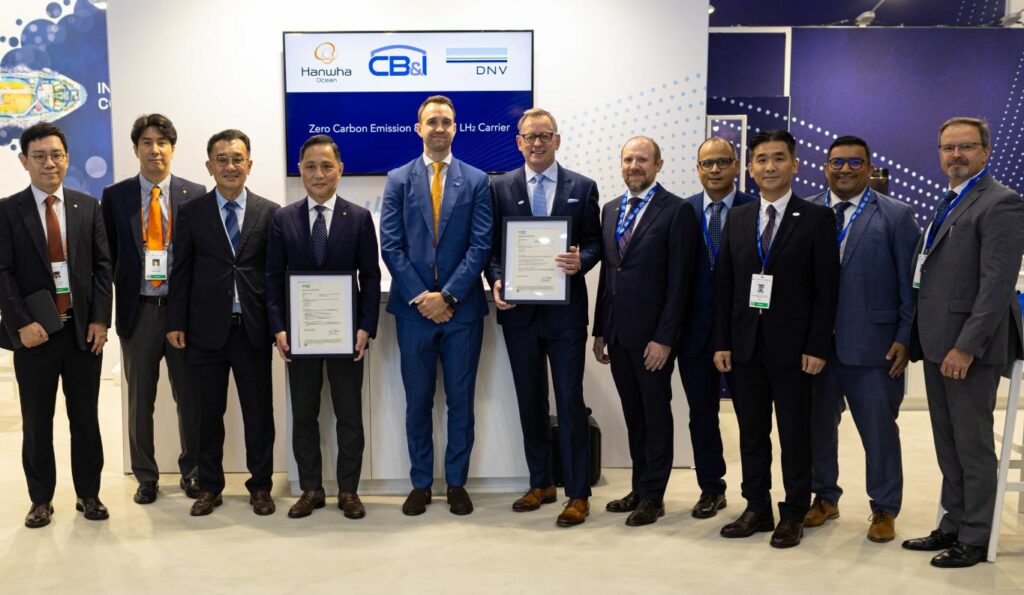CB&I, a subsidiary of McDermott, and Korean shipbuilder Hanwha Ocean recently announced the Approval in Principle (AiP) of their 80,000 m³ liquid hydrogen (LH2) carrier design, granted by classification society DNV.
CB&I’s cargo containment system has been confirmed to meet various international safety standards, including the International Gas Code (IGC Code) and the IMO’s interim recommendations for LH2 carriage. While this regulatory approval is a positive signal, it’s important to consider that meeting safety standards alone doesn’t guarantee market success. The technical maturity of hydrogen storage and transport technologies, particularly at such a large scale, is still developing.
For example, the system claims a low boil-off rate of 0.05% per day. While this figure sounds impressive, it remains unclear how this rate compares to the industry benchmarks for other cryogenic gases like LNG. Hydrogen’s physical properties—small molecular size, extreme cold, and high flammability—make it especially difficult to store and transport without losses. How well does the boil-off rate hold up under real-world shipping conditions? These are questions that will only be answered with more operational experience.
CB&I’s partnership with Hanwha Ocean seems like a strong collaboration. Hanwha’s experience in gas carriers complements CB&I’s expertise in onshore storage for LH2. Yet, this partnership’s ability to overcome scalability issues in the marine environment remains to be seen. While CB&I has a strong track record in onshore storage, the maritime sector presents different challenges. Rough seas, vibrations, and temperature fluctuations could impact the effectiveness of the containment systems.
Additionally, the role of hydrogen fuel cells for propulsion adds complexity. While the conceptual design for an electric propulsion system incorporating hydrogen fuel cells is presented as a cutting-edge solution, the technology is still evolving. Hydrogen fuel cells are currently more expensive and less energy-dense than conventional fuels, raising questions about whether this system will be commercially viable in the near future.
The joint statement by CB&I, Hanwha Ocean, and DNV emphasizes their collaboration as essential for tackling new challenges. While cross-industry cooperation is certainly valuable, it is important to assess whether this collaboration is producing tangible results beyond regulatory approvals. The real test will come when these designs are applied in practice.
